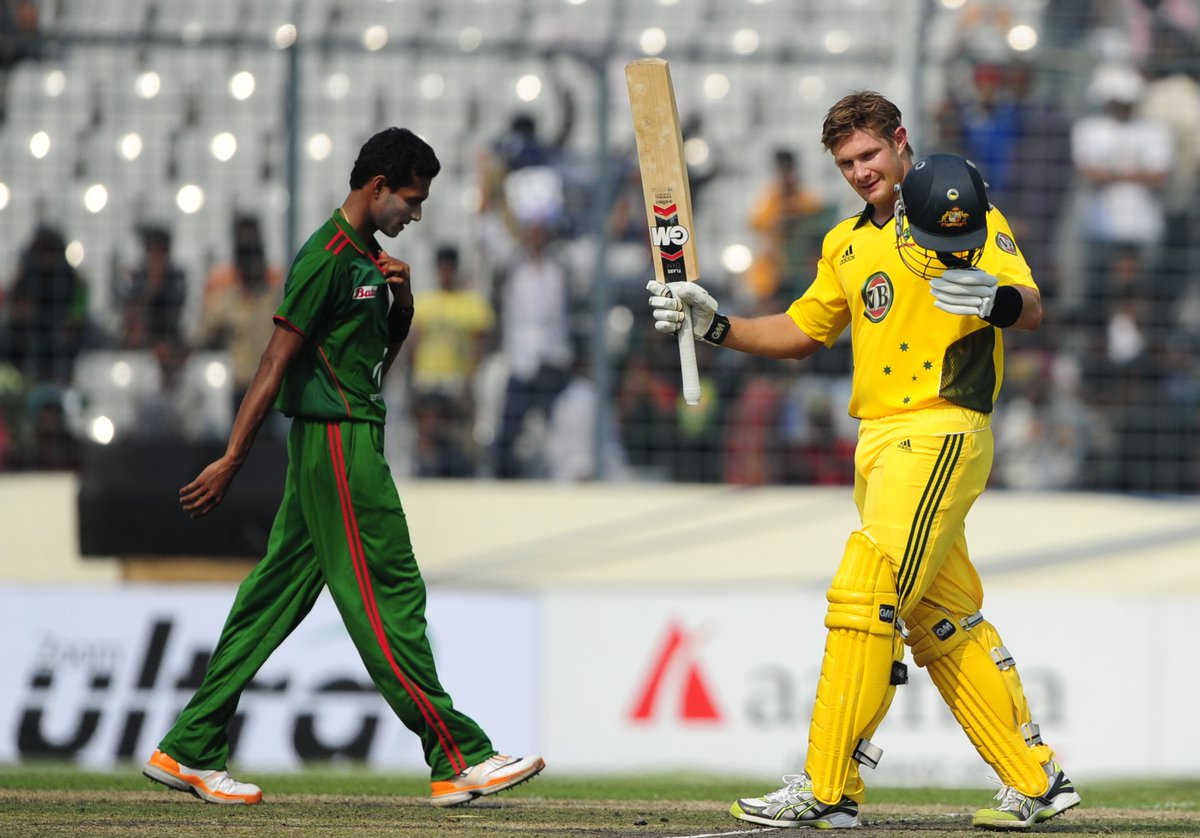A failed experiment; a derailed career
Back in the day, as a kid in India, 9 AM start to ODI matches during exam days wasn’t the worst of prospects. You were back home by 1 PM, meaning you got the chance to witness one full innings, but more importantly, the game also allowed you to instantly put behind all exam-related regrets.

No mobile phones - at least I didn’t have one - meant that the bicycle ride back home from school is filled with thoughts surrounding the match and in the 15-minute journey, you have already played out a 100 different scenarios in your head on what would have unfolded in the first innings. On April 11, 2011, I rode my Hercules Turbodrive back home knowing that two months of holidays awaited me, for I had just given my last board exam.
The 2nd ODI between Bangladesh and Australia was on, but the thought of being free for two full months after being oppressed by the education system for two long years overwhelmed everything else, so after a quick glance at the scorecard, I was off to play cricket with friends. Australia were 0/0 chasing 230. “Not a big deal,” I thought to myself whilst leaving the house. Two and a half hours later, I come back home and turn on the television, only to find out that Shane Watson had blasted a 96-ball 185, with him scoring 80% of the team total. I have, till date, not forgiven myself for making the choice to turn my back on the match.
Shane Watson’s ODI career peaked towards mid-2011. Watson started 2011 off with a startling 161* against England at the MCG and his display against Bangladesh in Dhaka, four months post that knock, was just a testament to what he had transformed into - a merciless beast who not only slaughtered bowlers with brute force, but also did so on a consistent basis. Eventually, he ended the calendar year 2011 with 1139 runs to his name and they came at an average of 57 and a strike rate of 109.
To put it simply, Watson, in ODIs, at that point of time, was head and shoulders above every opener in the world and was also Australia’s MVP; it was unsurprising that he was the undisputed winner of the Allan Border Medal for two consecutive years. It looked increasingly evident that Watson was headed towards greatness and was well and truly on his way to ingraining his name as one of the greatest ODI openers of all time.
But after a 65-inning extended purple patch between May 2009 and August 2011 where he’d averaged close to 50, with his career average threatening to bludgeon past 45, Watson ended his career with an average just over 40, averaging just 34 in his last 48 knocks. By the time he hung his boots, the ‘all-time great’ tag was replaced by words such as ‘great servant’ and ‘workhorse’ and it came to the point where he had to be politely booted out of the side. Watson’s career, post 2011, took a nosedive greater than the fall of WCW in 1999 and by 2016, his reputation was so tarnished that the beast incarnate he was between 2009-2011 became a mere myth.
Nine years on, it’s almost impossible to thoroughly dissect the whys and wherefores of Watson’s steep decline, but if someone were to point a gun at him and ask him to single out one reason for his downfall, he would probably look back at the move from the management to push him to No.3, during the turn of 2012. Watson, who’d opened in each of his previous 65 ODI innings and averaged close to 50, in the tri-series against India and Sri Lanka, was surprisingly asked to bat at No.3, with the management opting to open with Matthew Wade and David Warner. Eventually, that went on to become a feature of the rest of his career as in his last 47 ODI knocks, Watson batted at number three 25 times. That wasn’t the issue, though. It was that he averaged a meagre 32.04 in those 25 knocks.
In retrospect, Australia had no business pushing Watson to No.3. In ODIs between May 2009 and October 2011, Watson scored 651 more runs than any other opener in the world and, in this timeframe, registered a fifty-plus score every 2.73 innings. Prior to his demotion to No.3, Watson had scored 1124 runs in his 21 previous innings as an opener (averaging 59.15) and was in the midst of a hot-streak, where he’d scored 506 runs in 9 innings, including the 185* versus Bangladesh. Dropping him to No.3, if anything, was a sign of disrespect, and by doing so, they not only took him out of his comfort zone but also ended up killing off the momentum he’d generated over the past 30 months. The move meant that Watson had to start all over again. From scratch.
However, what made the move even more bizarre and baffling was the fact that above him were two openers who had played a total of 17 ODI matches between them. Warner, at that point of time, was a rookie who was still trying to figure out ODI cricket and Wade - who’d made his way into the team through strong Ryobi Cup performances - was making his international debut. The Wade-Warner partnership up top proved detrimental to Watson’s fresh beginning at No.3 as it meant that everytime he walked in to bat, he was under considerable pressure to up the scoring rate; in 13 innings together, Wade and Warner averaged around 37 for the first wicket with the scoring rate marginally over 5.00.
Throughout his successful run as an opener, Watson’s strength, much in accordance to the current version of Rohit Sharma, lied in him taking his time in his initial stay at the middle, after which he made use of the long levers to launch an onslaught towards the end. Batting at No.3, however, posed a completely different challenge and demanded him to restructure his game, something that he failed to do.
Perhaps, a wiser option would have been to give Warner and Watson a long run at the top of the order. Not only would it have given Watson the opportunity to elongate his purple patch as an opener, but it would also have given Warner a much smoother introduction to ODI cricket and Australia a lethal left-hand right-hand opening pair. Eventually, the pair ended up batting just 11 times together at the top of the order.
After his initial stint at No.3, Watson was moved back to the top for a brief period - where he averaged 34.85 in 15 innings - before his permanent demotion to No.3, but by the time Australia found a stable opening pair in the form of Finch and Warner, it was too late, for Watson’s confidence had gone for a toss and his form was in rapid decline, with him edging towards the twilight of his career. The last 19 innings of Watson’s career - where he exclusively batted at #3, #5 and #6 - yielded just 501 runs at an average over 31 and by 2016, he was completely phased out of the team.
What could have happened had Australia persisted with Watson up top is a question that will remain unanswered, but eventually, it worked out just about alright for them, for they did end up lifting the 2015 World Cup. Watson, though, will be forever left ruing the management’s move to push him to No.3, much like my decision to turn the television off before he went berserk against the Tigers.

Comments
Sign up or log in to your account to leave comments and reactions
0 Comments